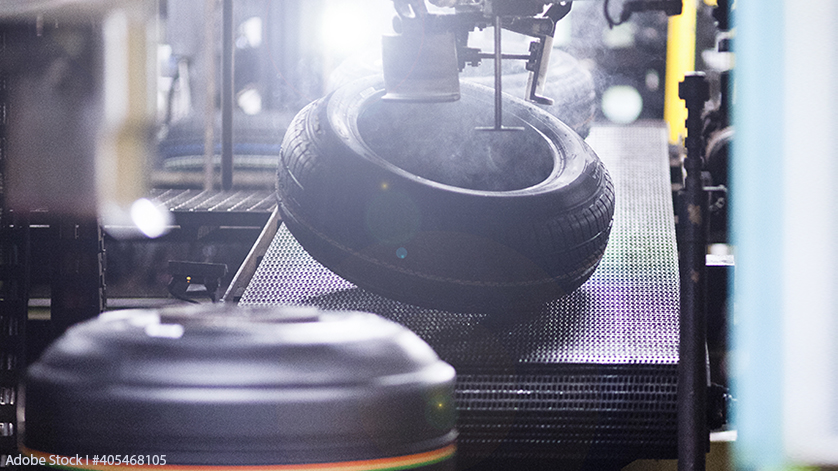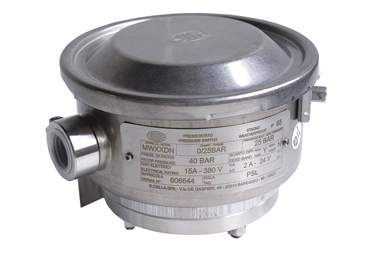
Numerous industrial processes have an inherently high risk potential. Special pressure switches support the safety of people and the environment. Example: the vulcanisation of tyres for motor vehicles. To monitor this process, leading manufacturers use the model MW switch from WIKA with SIL 2 rating.
Why such a pressure switch is necessary for safety in this application is shown by a look at the process: In a steam-heated press, the raw tyre is first filled with hot water to adapt it to the inner shape of the press. Then, under the influence of pressures of around 24 bar and temperatures of 150 °C to 170 °C the vulcanisation itself occurs. In the process, with the addition of sulphur, the tyre is given its elastic and robust final shape. However, if there is no appropriate monitoring, overpressure can occur in the curing press without warning. If this happens, the danger of boiling hot steam escaping is high. To rule out such an occurrence, tyre manufacturers generally use pressure switches to ensure the safety of the process.

The model MW pressure switch with SIL 2 rating has been developed for safety-relevant applications, such as tyre vulcanisation.
Control of overpressure and interlocking
The instruments fulfil two functions at once: On the one hand, they intervene in the event of overpressure, and on the other hand, they control the internal interlocking of the curing press to prevent it from opening accidentally before vulcanisation is completed. The process is finished as soon as a preset pressure value is reached. Then the pressure switch lifts the lock. This mechanism is constantly in motion in high-throughput automatic tyre production. As a result, the switch is continually being loaded. Consequently, it must have a long service life at this critical point. Premature wear would otherwise lead to an unscheduled shutdown of the plant.
Lowest failure probability
Tyre manufacturers therefore require pressure switches with distinct robustness and safety. For this reason, WIKA has developed the model MW pressure switch for safety-relevant applications such as vulcanisation. As a mechanical device, the model MW will switch without dependence on any energy supply, an important safety aspect. A SIL 2 rating in accordance with the IEC 61508 standard certifies the functional safety of the pressure switch. Its operational safety is also SIL 2 certified. Thus, the expected service life is about 90,000 pressure cycles and switching operations. The risk assessment of the model MW in accordance with EN ISO 13849-1 by an external certification resulted in the highest performance level “PL e” (lowest failure probability).
Microswitches, also with argon filling
All model MW instruments have microswitches that switch electrical loads up to 250V AC, 20 A directly. For certain applications, microswitch versions with argon filling provide an additional boost to safety and service life. The gas reduces oxidation, protects against corrosion and prevents sparking. For low switching powers, for example in PLC applications, there is a variant with gold-plated contacts.
Retrofitting existing plants
The model MW safety pressure switches from WIKA are also suitable for retrofitting. In the case of tyre vulcanisation, they can therefore help to adapt existing installations to the specifications of DIN EN 16474, which was amended in 2015. This standard obliges tyre manufacturers to operate all new machines with improved safety technology. The regulation is intended to prevent risks of danger in the long term.
Note
Further information on the model MW pressure switches and their safety features can be found on the WIKA website. If you have any questions, your contact will gladly help you.
Also read our articles
SIL-certified: Functional safety with mechanical switches
Mechanical pressure switches: How does one set the switch point?

